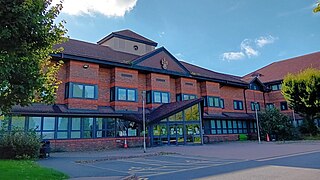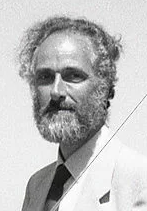
Leighton Buzzard is a market town in Bedfordshire, England, in the southwest of the county and close to the Buckinghamshire border. It lies between Aylesbury, Tring, Luton/Dunstable and Milton Keynes, near the Chiltern Hills.

Dagnall is a village in the parish of Edlesborough, in Buckinghamshire, England.

Linslade is a town in the civil parish of Leighton-Linslade, in the Central Bedfordshire unitary authority area of Bedfordshire, England. It borders the town of Leighton Buzzard. Linslade was transferred from Buckinghamshire in 1965. Before then, it was a separate urban district. It remained a part of the Diocese of Oxford until 2008 when it joined Leighton Buzzard in the Diocese of St Albans.

Southcote is a hamlet in the parish of Linslade, in Bedfordshire, England. It is in the civil parish of Leighton-Linslade. The hamlet name is Anglo Saxon in origin and means 'southern cottage'.

South Bedfordshire was a local government district in Bedfordshire, in the East of England, from 1974 to 2009. Its main towns were Dunstable, Houghton Regis and Leighton Buzzard.

Billington is a civil parish in Bedfordshire about 3 miles (4.8 km) south of Leighton Buzzard and not far from the Buckinghamshire border. There are two settlements: Little Billington and one that is now called Great Billington. At the 2021 census, the parish had a population of 359.

South West Bedfordshire is a constituency represented in the House of Commons of the UK Parliament. As with all constituencies of the UK Parliament, it elects one Member of Parliament (MP) by the first past the post system of election.
Wing Rural District was a rural district in the administrative county of Buckinghamshire, England. It was created in 1894 with the name Linslade Rural District, but was renamed Wing Rural District in 1897 when Linslade itself was removed from the district to become an urban district. Wing Rural District was abolished in 1974 to become part of Aylesbury Vale District.

Heath and Reach is a village and civil parish near the Chiltern Hills in Bedfordshire, England. It is 2 miles (3.2 km) north of Leighton Buzzard and 3 miles (4.8 km) south of Woburn and adjoins the county boundary with Buckinghamshire. Nearby places are Leighton-Linslade, Great Brickhill and the Duke of Bedford's Woburn Abbey, Woburn Safari Park and Woburn Golf Club.
Eaton Bray was a rural district in Bedfordshire, England from 1894 to 1933.

Three-tier education refers to those structures of schooling, which exist in some parts of England, where pupils are taught in three distinct school types as they progress through the education system.
Ormiston Denes Academy is a secondary school with academy status located in the northern outskirts of Lowestoft in the English county of Suffolk. It has around 1000 students aged 11 to 16.
Vandyke Upper School and Community College is an academy school and sixth form in Leighton Buzzard, Bedfordshire, England. As of 2022, there are approximately 1500 students in both the sixth form at Vandyke, and compulsory education.
The system of education in Iceland is divided in four levels: playschool, compulsory, upper secondary and higher, and is similar to that of other Nordic countries. Education is mandatory for children aged 6–16. Most institutions are funded by the state; there are very few private schools in the country. Iceland is a country with gymnasia.
Mark Anthony Gaius Versallion is a British politician, businessman, and officer in the Royal Naval Reserve. He was the Conservative prospective parliamentary candidate for Stretford and Urmston from 2007 to 2009 and from 2009 to 2011 was Chairman of the Foreign Affairs Forum of the Conservative Party. Since 2011 he has been a member of Central Bedfordshire unitary authority.
Oak Bank School is a co-educational special school with academy status located in Leighton Buzzard, Bedfordshire, England. The school accepts pupils from all over the Central Bedfordshire area.
Linslade was an urban district in the administrative county of Buckinghamshire, England from 1897 to 1965.
The town of Leighton Buzzard in Bedfordshire, England was administered as a Local Government District from 1891 to 1894 and an Urban District from 1894 to 1965.

Beric M. Morley was a British architectural historian and archaeologist. He became a familiar face on the Channel 4 television series Time Team. He was a regional director for English Heritage in the South West of England.












